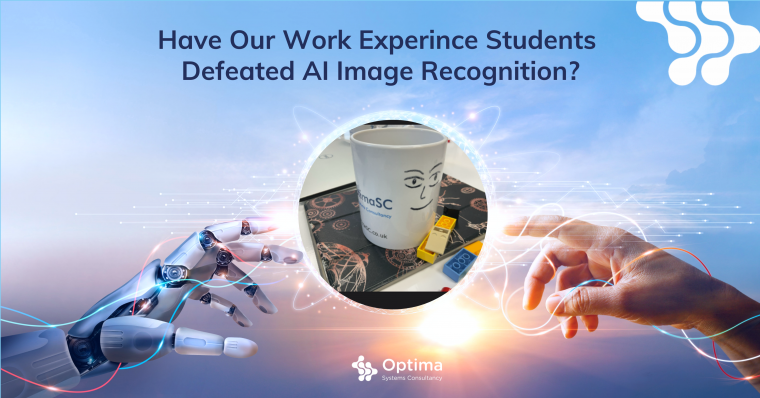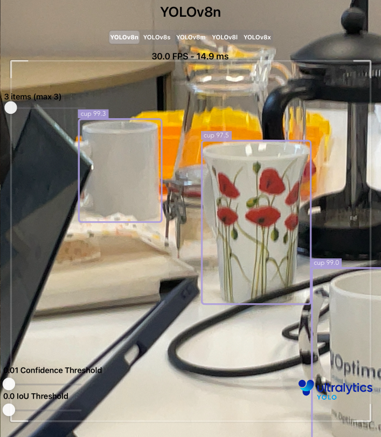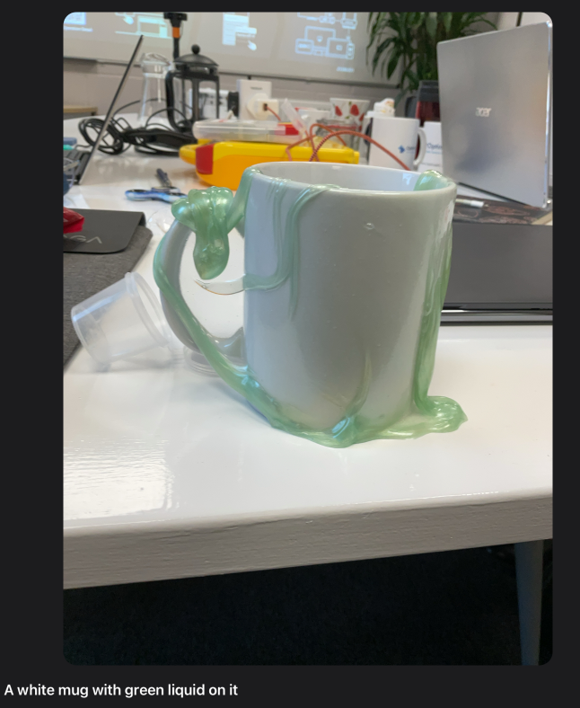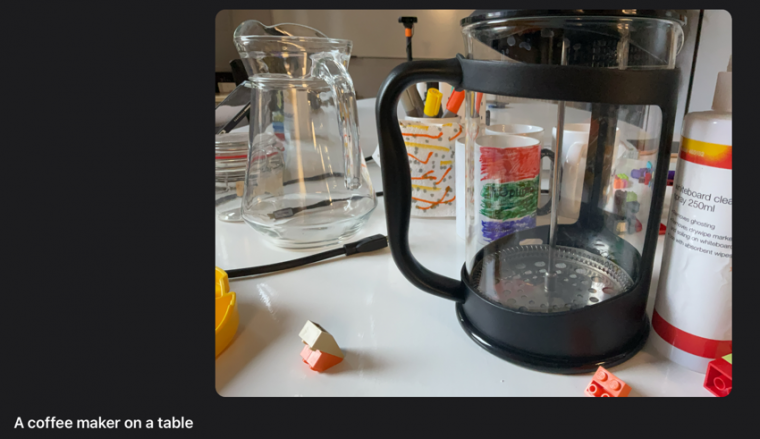
At Optima,we believe in fostering the innovative spirit of the next generation. Recently, a team of three work experience students embarked on an exciting project with us: defeating AI image recognition systems using a common object—a coffee mug. Their mission was to prevent AI from recognizing coffee mugs while ensuring that humans could still identify them. The results were nothing short of impressive, revealing deep insights into the workings of AI and its vulnerabilities.
The Challenge: Outwitting AI with a Mug
The students delved into the fascinating world of AI image recognition, conducting physical experiments with various applications such as “Seeing AI” (designed for the blind and partially sighted), YOLO, Google Images, and Apple Photos. They consulted our in-house expert on camouflage techniques and explored open-source methods to reference sources effectively.
Their investigation led them to present on several key aspects:
- How AI Vision Works: Understanding the fundamental mechanisms behind AI image recognition.
- Impact of AI: Examining the current and potential future impacts of AI technology.
- Ethical Considerations: Discussing the moral implications of AI in society.
- Future AI Capabilities: Predicting how AI might evolve and improve.
Breaking the AI Code: Key Discoveries
Did they succeed in their quest to outsmart the AI? Absolutely!
One of their most intriguing findings was the significant bias in AI outputs towards “human interest.” When a human, animal, or even a plant appeared in the scene, the AI often overlooked the presence of a mug. This bias suggests that AI has learned to prioritise elements it deems more captivating to humans, occasionally mislabelling mugs as phones if held a certain way.
The students explored various mug features such as handles and cylindrical shapes, experimenting with different camouflage methods including:
- Dazzle Patterns: Complex designs that disrupt the AI’s ability to identify objects.
- Colour Variations: Using colours to blend the mug into the background.
- Cluttered Scenes: Placing the mug in busy environments to confuse the AI.
- Green Slime: An unusual but effective method to obscure the mug’s features.
Interestingly, they found that the most effective camouflage techniques often confused human perception as well. They also examined the impact of gloss and shine, testing whether the AI could distinguish between a real mug and a photo of one on a device.



A Learning Experience for All
Our internal audience was thoroughly impressed by the students’ professional presentation. We gained valuable insights into AI recognition and the mechanisms used to defeat it. The students enjoyed a rich mix of practical investigations and research, gaining exposure to key concepts such as DLODs (Defence Lines of Development) and Systems Engineering Rich Pictures, as well as marketing strategies.
Additionally, they received guidance on documenting their experience for personal statements and CVs, helping them progress in their chosen fields. This project not only showcased their technical skills but also highlighted the importance of ethical considerations and creative problem-solving in the realm of AI.
Looking to the Future
At Optima, we have always been a business that looks to work with our wider society through our involvement with professional bodies, charities, and STEM initiatives. By inspiring and mentoring the next generation, we aim to leave a legacy. We believe this is critical in creating a thriving business and a rich professional home for our people.

